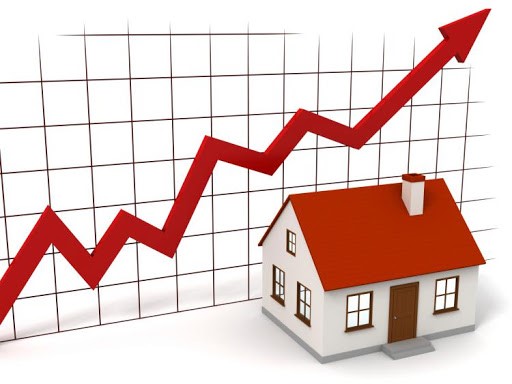House Values uUp by $2 Trillion Since Pandemic
储备银行已经为自己留下了开始使抵押贷款成本正常化的空间,因为自冠状病毒开始爆发以来,创纪录的低利率帮助推动澳大利亚的房屋价值上涨了2万亿。
昨天(2021年12月7日,周二)召开的澳洲联储董事会决定,连续第13个月将现金利率维持在0.1%。官方数据显示,这些廉价资金为那些能够进入房地产市场的人带来了巨额意外之财。
澳大利亚统计局表示,住宅物业的价值在过去一年中上涨了21.7%,总价值达到9.3万亿澳币。仅在9月份季度,它就增加了4870亿,累计比去年3月增加了2万亿。
炙手可热的新南威尔士州房地产市场占涨幅的40%,一年以来该州的房产价值增长了8000亿至3.7万亿。
在维多利亚州,房价也攀升了5000亿达到2.6万亿。
但价值的飙升也迫使买家承担了创纪录的抵押贷款。的却如此,高级经济学家卡拉姆·皮克林(Callam Pickering)表示,住宅价格与收入的比率现在的水平是平均收入的7.2倍,高于去年3月的5.8倍。而该比率在2017年至2020年期间,稳定在平均收入的5.6至5.8倍之间。
Property Council的首席执行官肯莫里森表示,人们越来越担心是否在未来能拥有房屋所有权。“虽然低利率无疑推动房价上涨,但长期供应不足,过度的税收和收费以及低效的规划系统,这些组合也不必要地夸大了住房成本,”他说。
有早期迹象表明,价格的上涨即将结束。联邦银行昨日公布的数据显示,其11月购房意向下降27.5%,比过去一年下降17.6%。
价格飙升的一个关键因素是低利率,这是澳洲联储用来保护经济免受COVID-19经济衰退影响的措施。该银行一直暗示,它不会在2024年之前开始加息,但在今年的最后一次board meeting之后,它保留了提前采取行动的选择。
澳洲联储行长菲利普·洛(Philip Lowe)表示,在明确看到工资增长之前,该行不会采取行动。“在实际通货膨胀率可持续地在2%至3%的目标范围内之前,董事会不会提高现金利率。这将要求劳动力市场足够紧张,以产生比目前高得多的工资增长,”他说。“这可能需要一些时间,董事会准备耐心等待。”
澳洲联储仍在坚持其每周40亿澳元的债券购买计划,直到明年2月份,届时它将持有约3500亿澳元的联邦和州政府债务。
国际清算银行牛津经济研究院(BIS Oxford Economics)首席澳大利亚经济学家莎拉·亨特(Sarah Hunter)表示,“澳洲联储可能会比之前的2024年目标更早地提高利率。虽然2022年提高现金利率似乎不太可能......但数据确实表明,在2023年初加息是有道理的。” 她说。
House values up by $2 trillion since pandemic
SHANE WRIGHTSENIOR ECONOMICS CORRESPONDENT
The Reserve Bank has left itself room to start normalising the cost of mortgages as record-low interest rates helped drive Australian house values up by $2 trillion since the start of the coronavirus pandemic.
The RBA board held the cash rate at 0.1 per cent for a 13th consecutive month yesterday while official figures revealed cheap money had delivered huge paper windfalls to those able to get into the property market.
The Australian Bureau of Statistics said the value of the nation’s residential properties lifted 21.7 per cent over the past year to be worth a combined $9.3 trillion. It increased by $487 billion in the September quarter alone to be $2 trillion up on March last year.
The hot NSW property market accounted for 40 per cent of the rise, with values in the state swelling by $800 billion to $3.7 trillion.
In Victoria, they have climbed by $500 billion to $2.6 trillion.
But the surge in values has also forced buyers to take on record mortgages. Indeed, senior economist Callam Pickering said the dwelling price-to-income ratio was now at 7.2 times the average income, up from 5.8 in March last year. The ratio had been steady between 5.6 and 5.8 times the average income between 2017 and 2020.
Property Council chief executive Ken Morrison said people were rightly growing concerned about the future of home ownership.
‘‘While low interest rates have no doubt led to higher house prices, the combination of chronic undersupply, excessive taxes and charges, and inefficient planning systems have also unnecessarily exaggerated the cost of housing,’’ he said.
There are early signs the lift in prices is coming to an end. Commonwealth Bank data released yesterday showed its measure of home-buying intentions fell 27.5 per cent in November to be down 17.6 per cent over the past year.
A key factor in the price surge has been low interest rates, which the RBA has used to protect the economy from the COVID-19 recession. The bank has been signalling it would not start lifting interest rates until 2024, but following its last board meeting of the year it left open the option of moving earlier.
RBA governor Philip Lowe said the bank would not move until it clearly saw wages growth.
‘‘The board will not increase the cash rate until actual inflation is sustainably within the 2 to 3 per cent target range. This will require the labour market to be tight enough to generate wages growth that is materially higher than it is currently,’’ he said. ‘‘This is likely to take some time and the board is prepared to be patient.’’
The bank is sticking with its $4 billion-a-week bond-buying program until February, by which time it will hold about $350 billion in federal and state government debt.
BIS Oxford Economics chief Australia economist Sarah Hunter said the RBA was likely to lift rates much sooner than its previous 2024 target.
‘‘While a cash rate rise in 2022 looks unlikely ... the data does suggest that rate rises will be warranted in early 2023,’’ she said.

